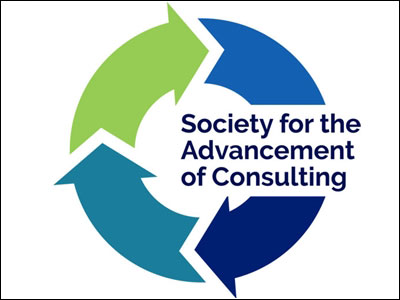CLAREMONT, Calif., December 2, 2019/ExpertClick/ –The best businesses are focusing on ART—Attaining, Retaining and Training—their highest performing employees, according to The Society for the Advancement of Consulting® (SAC). These organizations identify the talent the organization needs, then expect leaders to create a workplace which lets the best employees excel.
Put the “best of the best” before the rest
“Businesses should focus on attracting, retaining and developing the ‘best of the best’ in talent,” points out Lisa Anderson, President of Claremont, CA-based LMA Consulting Group, Inc. and manufacturing expert known for creating supply chain resiliency. “Any time a client thinks he cannot afford the best talent for a key role and settles for less, he regrets it! At least 80% of the time, he not only spends more than originally planned but he also suffers with dissatisfied customers, disgruntled peers and/or unhappy Board members as well.”
“Instead, executives should decide which roles are core to success, and then invest whatever is required in attracting, retaining, and developing those people,” Lisa adds. “Typically, I find that clients overlook already-existing talent, so start there. In addition, instead of spending all your time on low performers, find your top performers and develop them. You will stand out from the crowd in no time!”
Focus on Effective Leaders as Coaches
“For years most organizational experts have known that it is not how much you know, but how well you relate to other people in the organization that really matters.” says Dr. Maynard Brusman, a San Francisco Bay Area consulting psychologist and executive coach. “Coaching paves the way for decision makers to create higher levels of organizational effectiveness through dialogue, inquiry and positive interactions.”
According to Dr. Brusman, “Effective coaching works with leaders at all levels to develop their proficiency in working with change. It helps them identify when teamwork is important, and to use their skills to foster it.”
Dr. Brusman advises his executive coaching clients that “every leader needs to be a good coach. Although coaching focuses on personal development rather than on accomplishing tasks, this leadership style generally predicts a positive emotional response and better results.”
Make managers accountable for the workplace they create
“If business leaders don’t fundamentally believe that people make or break their businesses, it doesn’t matter where they focus,” points out Lisa A. Bing, Brooklyn- based strategy and leadership expert, President, Bing Consulting Group, Inc., and author of the forthcoming book Leadership Partners Not Teams…How To Unleash The Full Power Of Senior Leaders.
Lisa explains, “I quit a private gym that I loved because my excellent trainers were regularly turning over due to poor treatment by the owner. Businesses that value people hire well and recognize that employee retention is the intersection of meaningful work, feeling valued, and professional growth.
“To hire well, toss job descriptions. Replace them with job expectations. What outcomes are expected? Describe the experience customers expect. Outline criteria for program impact. Describe characteristics of the workplace managers must create,” she notes. “Don’t rely on a job candidate’s past experience—explore their capacity to perpetuate and advance your plans and goals. Managers must be accountable for creating a workplace where people want to work.”
Align talent to rapidly changing market conditions
“Businesses should be strategically hiring employees to prepare for rapidly changing business conditions,” according to Mark D. Wolf, resident of LavaFish Advisors, a NYC-based consultancy dedicated to helping leaders uplevel their conversation for greater impact, and Founder of the NYC Chapter of the International Society of Sustainability Professionals. “Current teams are maxed out, especially in areas that are receiving greater scrutiny from investors, NGOs, stakeholders and employees.”
“The risk for companies being out of alignment with the demands from any of these key constituents is high,” Mark adds. “Misalignment can quickly turn a company’s business success story into a cautionary tale. So the smart move is to be ahead of the curve by understanding these needs in-depth and not ignoring tomorrow’s new priority.”
Clearly define your best talent and get the best out of them first
“Many multinationals struggle internally with clearly identifying their top employees, developing them, and attracting equally high-quality talent,” says Steven Hunt an Executive Consultant at Alesco Development in Germany. “Instead, they try to be everything to everyone, so they get lost in a complex web of trying to hire, train, and retain everyone. That’s frustrating for all and bad for business results.”
“There is a clear parallel in professional sports,” he notes. “Barcelona doesn’t leave Messi on the bench. He’s the best. Top teams get the best out of their top players first. As in business, it’s the only way to consistently win. And, by focusing on the best, they always attract those with the best future potential.”
Walk the talk when it comes to building an employer brand
Building a strong employer brand is important to all aspects of hiring, training, and retaining employees, according to Linda Popky, president of Redwood Shores, CA-based strategic marketing firm Leverage2Market Associates, and author of the book Marketing Above the Noise: Achieve Strategic Advantage with Marketing That Matters.
“This is more than just creating a mission statement or set of values for the organization. It involves how the company actually acts towards its employees.
“Those organizations who walk the talk on their core values when it comes to employees are those that will find it easier to hire and retain new talent,” she added. “When this is done well, your best employees become ambassadors and evangelists for your organization. Not only will that help you keep and grow your existing talent, but it will help drive additional high quality individuals to want to work for you.”
The talent “super triage” is a vital focal point
“Businesses should be focused on talent ‘super triage’,” said SAC Founder Alan Weiss, PhD. “That is, nurturing and retaining the very best, nurturing those who seem to have high potential, accepting the departure of those who are average, and acquiring high potential talent to fill the voids.”



